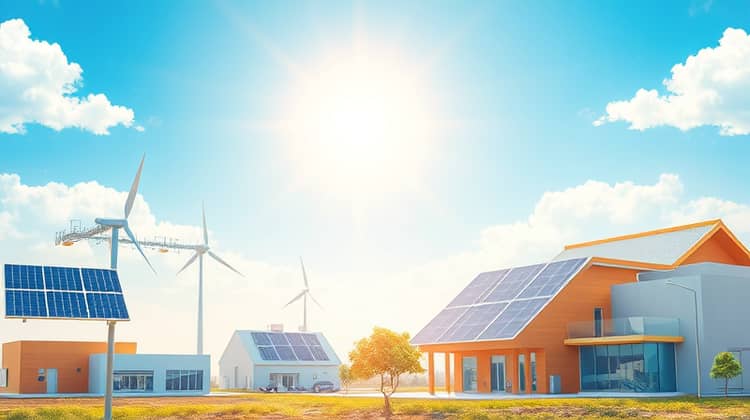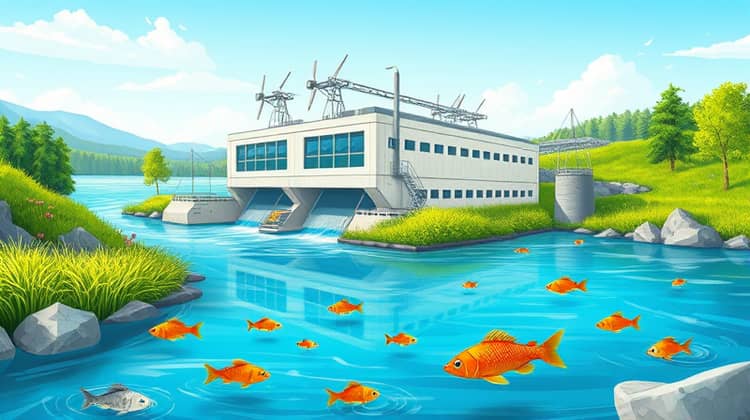The increasing urgency of climate change has led to a surge in innovations across various sectors, particularly in renewable energy. The transition from fossil fuels to cleaner energy sources is not just a necessity but an opportunity for technological advancement. This article will explore the latest breakthroughs in renewable energy, examining technologies that promise to revolutionize the way we produce and consume energy.
1. Solar Energy Advancements

Recent advancements in solar energy technology have paved the way for more efficient and cost-effective solutions. Solar panels have become thinner, lighter, and more efficient, allowing for enhanced energy capture even in low-light conditions. Innovations such as bifacial panels, which capture sunlight from both sides, are redefining the landscape of solar energy generation.
Moreover, solar energy storage systems have improved significantly, allowing homeowners and businesses to store energy generated during sunny days for use during the night or cloudy periods. This development is crucial for maximizing solar energy usage and ensuring a steady energy supply.
- Bifacial solar panels
- Building-integrated photovoltaics (BIPV)
- Advanced tracking systems
- Improved energy storage solutions
2. Wind Energy Innovations

Wind energy is continually evolving, with recent technological innovations driving its efficiency and output. One of the most notable advancements is the development of larger and more powerful turbines, which are capable of generating more energy and operating efficiently at lower wind speeds. These larger turbines can capture wind energy over a wider area, maximizing energy production.
In addition to turbine advancements, floating wind farms are emerging as a game-changing solution for offshore wind energy. These installations allow for turbines to be positioned in deeper waters, where winds are often stronger and more consistent. This means more energy can be harnessed from locations previously deemed unsuitable for traditional wind farms. Building these structures has potential environmental benefits as they can avoid disrupting marine habitats found in shallower waters.
Furthermore, innovations in smart technology and blade design are helping to minimize noise and maximize aerodynamic performance, making wind energy a more viable and attractive option for urban and rural settings alike.
- Larger, more powerful turbines
- Floating wind farms
- Advanced blade design technology
- Smart technology integration
3. Hydroelectric Power Developments

Hydroelectric power continues to be one of the most reliable sources of renewable energy, and recent developments have enhanced its potential. Innovations such as small modular hydropower plants offer a lower environmental impact while providing local energy solutions. These smaller installations can be easily integrated into existing waterways, generating power without the extensive disruption traditionally associated with large dams.
Additionally, upgraded turbine technology and better water management practices have increased the efficiency of existing hydroelectric plants. Enhanced fish passage systems ensure minimal disruption to aquatic ecosystems, making modern hydro projects more sustainable than their predecessors.
- Small modular hydropower plants
- Upgraded turbine technology
- Improved environmental management practices
4. Geothermal Energy Breakthroughs

Geothermal energy has gained traction as a reliable renewable resource due to its ability to provide consistent power regardless of external weather conditions. Recent breakthroughs in drilling technology and enhanced geothermal systems (EGS) have made it possible to tap into previously inaccessible heat sources deep beneath the Earth’s surface. This expanded reach can significantly increase the locations and fields available for geothermal energy production.
Moreover, innovations in heat exchange systems allow for more effective and efficient energy extraction, enabling geothermal plants to operate at optimal conditions. These advancements contribute to making geothermal energy a more economic option for both electricity generation and heating applications.
- Advanced drilling techniques
- Enhanced geothermal systems (EGS)
- Improved heat exchange technologies
5. Biomass and Bioenergy Technologies

Biomass and bioenergy represent an important part of the renewable energy landscape, and ongoing research continues to unveil new methods for improving efficiency and sustainability. Innovations in the conversion process, such as advanced fermentation techniques, have allowed for more effective transformation of organic materials into usable fuels. This improved efficiency helps to reduce costs and increase output, making biomass a more attractive option.
Research into algal biofuels is also gaining momentum, as algae can be grown in non-arable land and can produce high yields of oil and biomass. Furthermore, these innovations can simultaneously assist in carbon capture, making algae-based biomass a dual-benefit solution in addressing both energy needs and climate change issues.
Finally, integrating bioenergy systems with agricultural processes allows for a closed-loop system, where waste is converted into energy, contributing to sustainability and minimizing landfill waste.
- Advanced fermentation techniques
- Research into algal biofuels
- Integration of bioenergy with agricultural processes
6. Energy Storage Systems

Energy storage is a critical component in the transition to renewable energy, enabling power generated from intermittent sources to be used when needed. Recent advancements in battery technology, particularly lithium-ion and solid-state batteries, have improved capacity, efficiency, and lifespan. These improvements make energy storage more accessible for residential, commercial, and industrial applications.
- Lithium-ion battery advancements
- Solid-state battery technology
- Increased storage capacity and lifespan
7. Smart Grid Technology

The future of energy management lies in smart grid technologies, which enhance the efficiency and reliability of energy distribution. Innovations in communication technologies allow for real-time monitoring and management of energy use, leading to better resource allocation and reduced wastage.
- Real-time monitoring and management
- Integration of renewable sources into the grid
- Improved energy distribution efficiency
8. Ocean and Marine Energy

Ocean energy is an exciting frontier in renewable energy research, with innovative technologies aiming to harness the vast potential of tidal and wave energy. Recent developments in marine energy converters have begun to yield promising results, showcasing their ability to produce power reliably and sustainably while minimizing environmental impacts.
Additionally, the research into underwater turbines and buoys designed to capture wave energy is gaining traction, presenting new opportunities for coastal regions to generate clean energy.
- Marine energy converters
- Underwater turbines
- Wave energy capture technology
Conclusion

The advancements in renewable energy technology are not just innovative but essential in our quest for a sustainable future. As the world shifts towards greener energy solutions, the developments in solar, wind, hydro, geothermal, biomass, energy storage, smart grids, and marine energy offer a roadmap for a cleaner planet.
These innovations not only promise to reduce reliance on fossil fuels but also enhance energy security and create new economic opportunities across various sectors. The collective push towards renewables ensures a diversified energy landscape that is resilient to climate change and other global challenges.
Ultimately, staying informed about these technological advancements will be crucial for individuals, businesses, and policymakers as we navigate the transition to a more sustainable energy future.














